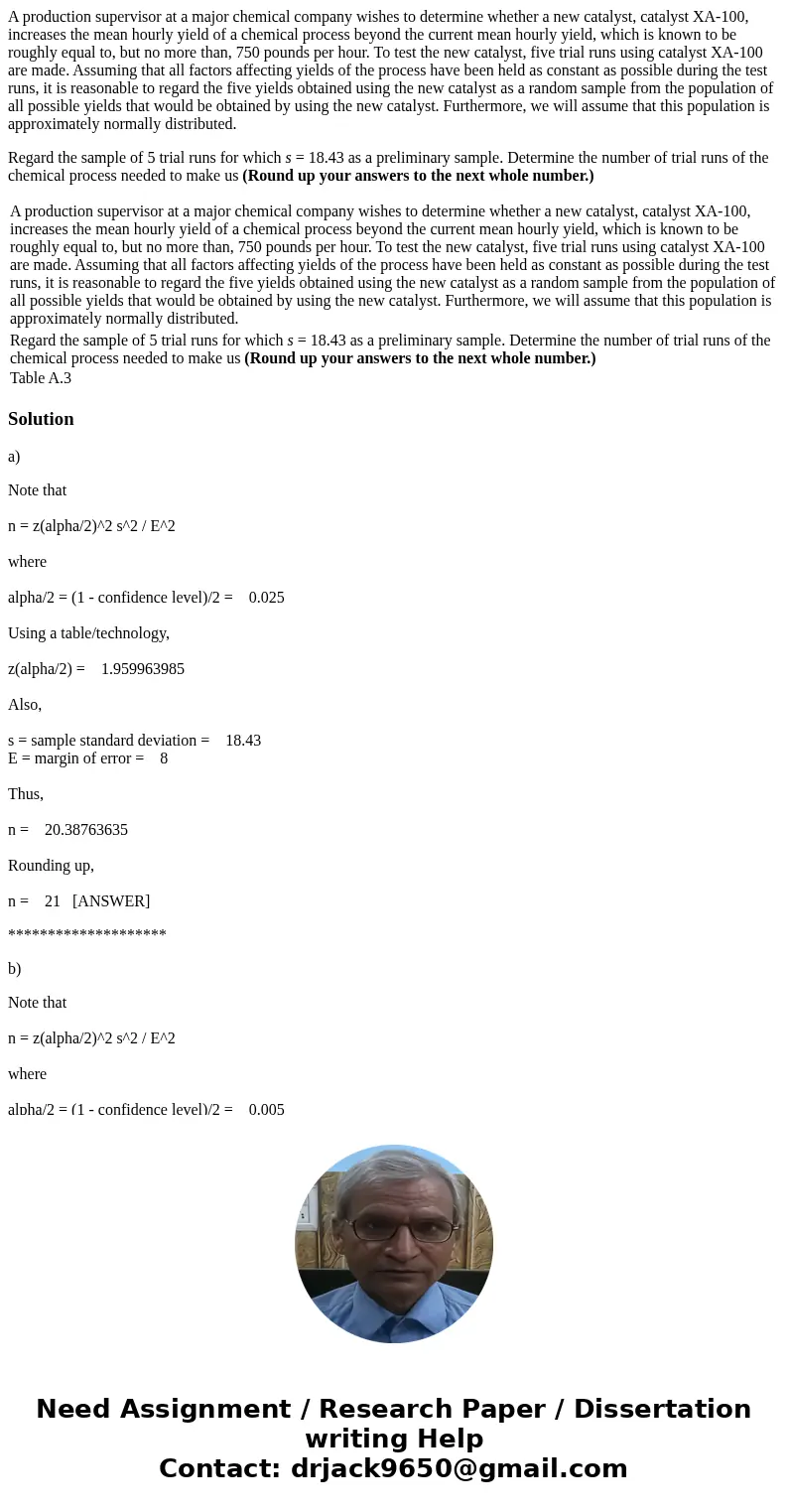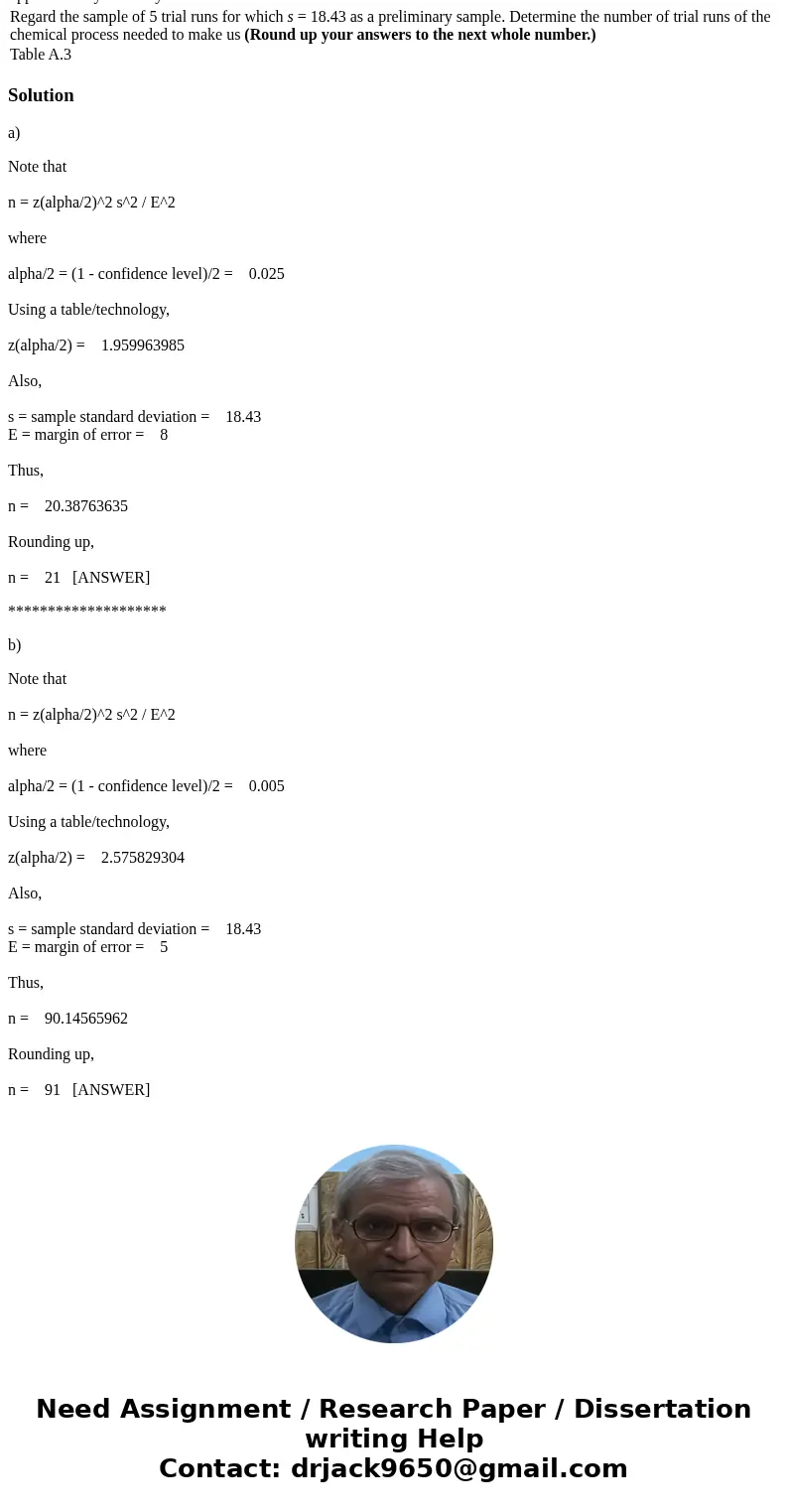A production supervisor at a major chemical company wishes t
A production supervisor at a major chemical company wishes to determine whether a new catalyst, catalyst XA-100, increases the mean hourly yield of a chemical process beyond the current mean hourly yield, which is known to be roughly equal to, but no more than, 750 pounds per hour. To test the new catalyst, five trial runs using catalyst XA-100 are made. Assuming that all factors affecting yields of the process have been held as constant as possible during the test runs, it is reasonable to regard the five yields obtained using the new catalyst as a random sample from the population of all possible yields that would be obtained by using the new catalyst. Furthermore, we will assume that this population is approximately normally distributed.
Regard the sample of 5 trial runs for which s = 18.43 as a preliminary sample. Determine the number of trial runs of the chemical process needed to make us (Round up your answers to the next whole number.)
| A production supervisor at a major chemical company wishes to determine whether a new catalyst, catalyst XA-100, increases the mean hourly yield of a chemical process beyond the current mean hourly yield, which is known to be roughly equal to, but no more than, 750 pounds per hour. To test the new catalyst, five trial runs using catalyst XA-100 are made. Assuming that all factors affecting yields of the process have been held as constant as possible during the test runs, it is reasonable to regard the five yields obtained using the new catalyst as a random sample from the population of all possible yields that would be obtained by using the new catalyst. Furthermore, we will assume that this population is approximately normally distributed. |
| Regard the sample of 5 trial runs for which s = 18.43 as a preliminary sample. Determine the number of trial runs of the chemical process needed to make us (Round up your answers to the next whole number.) |
| Table A.3 |
Solution
a)
Note that
n = z(alpha/2)^2 s^2 / E^2
where
alpha/2 = (1 - confidence level)/2 = 0.025
Using a table/technology,
z(alpha/2) = 1.959963985
Also,
s = sample standard deviation = 18.43
E = margin of error = 8
Thus,
n = 20.38763635
Rounding up,
n = 21 [ANSWER]
********************
b)
Note that
n = z(alpha/2)^2 s^2 / E^2
where
alpha/2 = (1 - confidence level)/2 = 0.005
Using a table/technology,
z(alpha/2) = 2.575829304
Also,
s = sample standard deviation = 18.43
E = margin of error = 5
Thus,
n = 90.14565962
Rounding up,
n = 91 [ANSWER]


 Homework Sourse
Homework Sourse